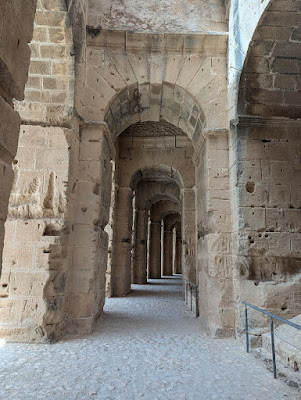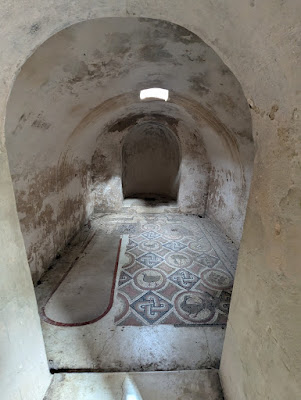This is El Jem, a UNESCO World Heritage Site.
Built by the Romans around 238AD, for events and gladiator games, this amphitheater held 35,000 spectators, making it one of the largest in the world.
Underground passages held animals for gladiators to fight.
Afterwards we toured Carthage, beginning at the Archeological site where Roman baths of Antoninus lie at the edge of the sea. This UNESCO World Heritage Site is one of the largest bath complexes in the world. It held many rooms and chambers with different temperature pools. The baths were destroyed in 439AD, and all that remain are the lower levels. Based on what we can still see, this place must have been grand.
This Roman Theatre of Carthage is now a place for live musical performances.
Around 200A.D. Christianity grew in Carthage which was strongly opposed by the Romans. A number of believers were killed for their faith. Thousands gathered when two Christian women, Felicitas and Perpetua, were thrown to wild animals in this amphitheater (below) when they refused to deny their faith.
We visited the Carthage Aqueduct, the largest Roman aqueduct at 88 miles long, constructed in the second century with over 300 arches.
Our friend and guide walking thru the aqueduct. Gives a good perspective of the great size of each tunnel.
Last stop- Sidi Bou Said, known for its charming white and blue homes overlooking the Mediterranean.
A cemetery sits atop the hillside. These vaults are shared by multiple people, whose bodies are added over time.
I'll leave you with this statue, the one-armed rat, which we learned is the symbol of cleanliness in the area. Au revoir!


































